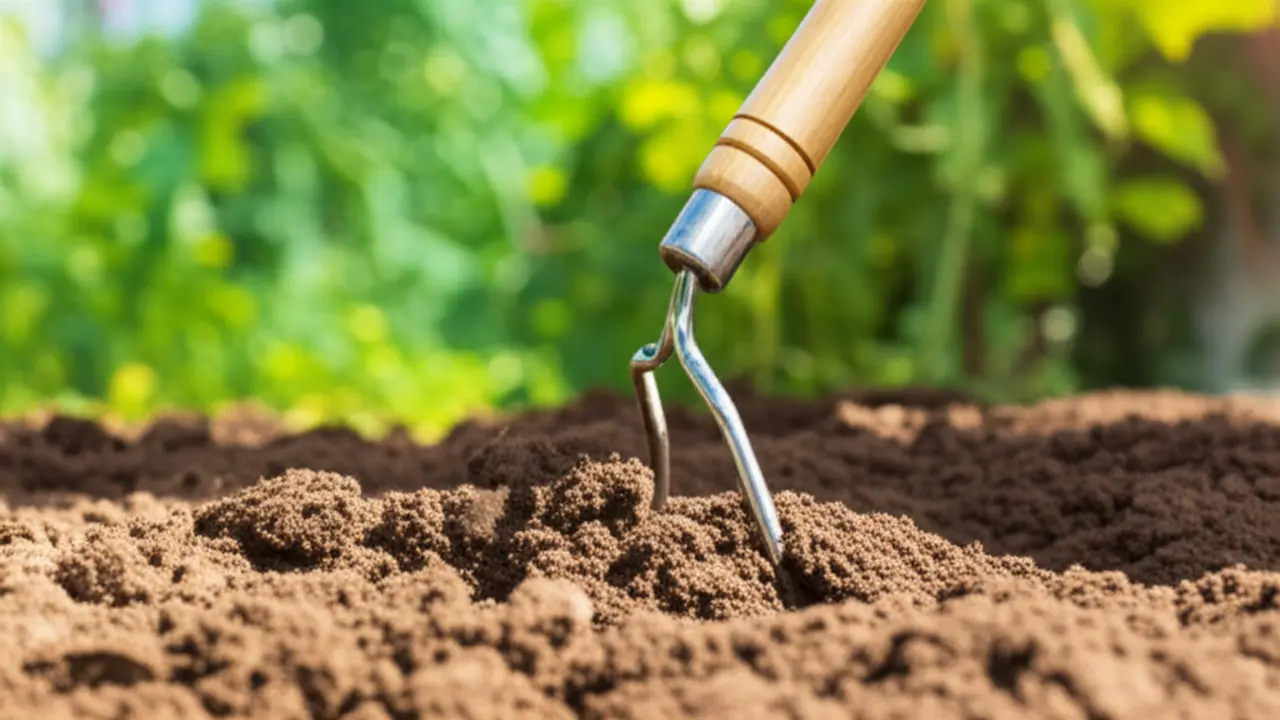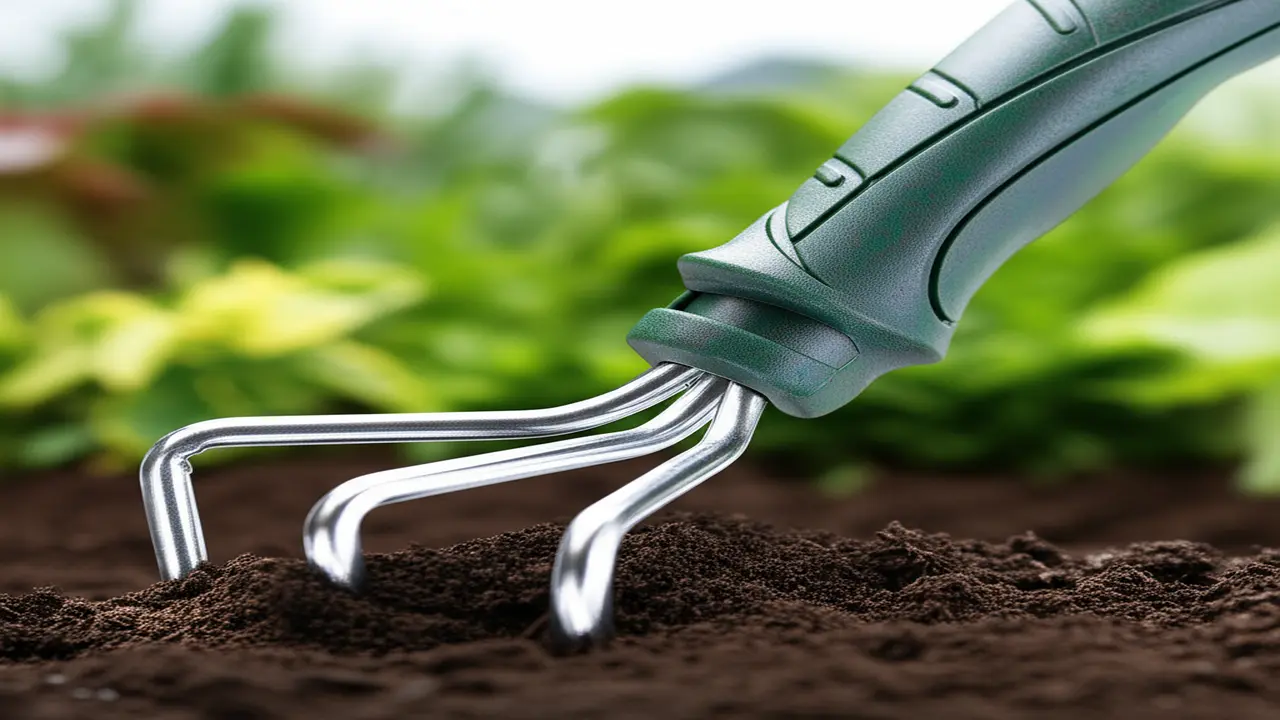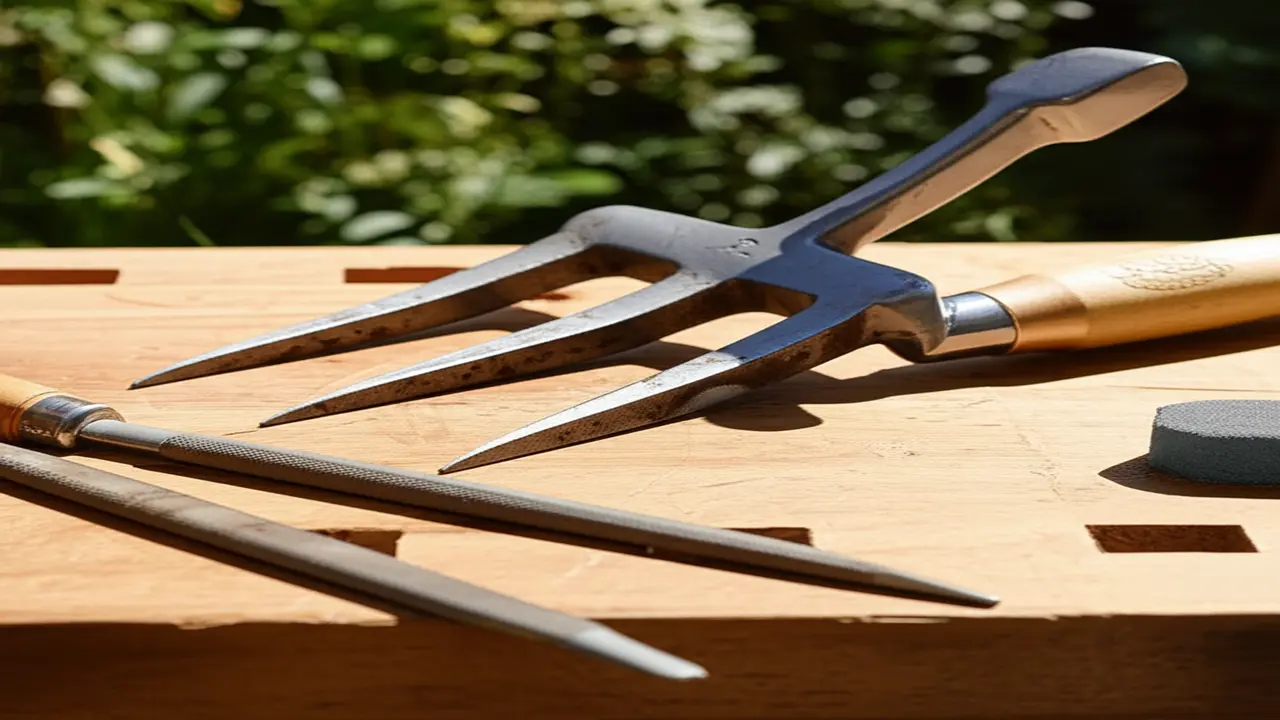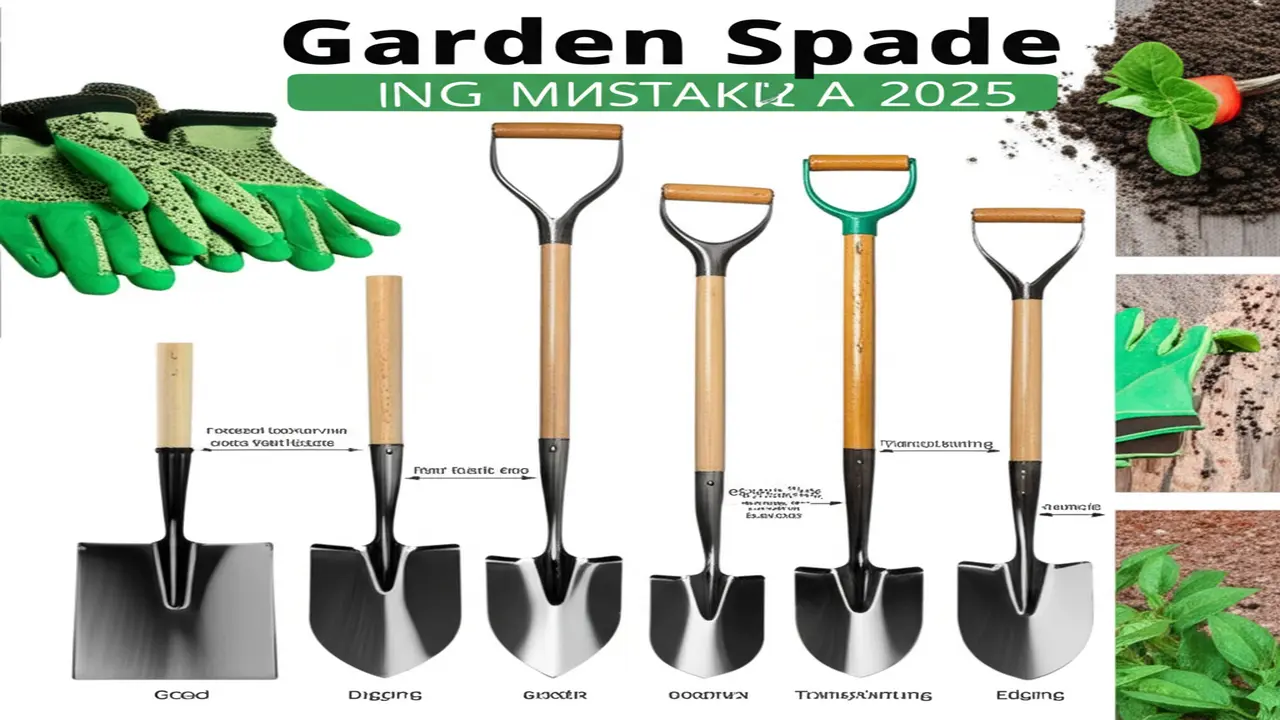Professional Hand Cultivator: Ultimate 2025 Guide & Top Picks
When it comes to advancing your gardening craft, investing in a professional hand cultivator can transform routine soil preparation into an efficient, comfortable task. For serious gardeners, landscapers, and horticulturists, using durable and ergonomically designed tools is essential to achieving refined results without unnecessary strain. This comprehensive guide delves into choosing the right tool tailored to your needs, examining materials, ergonomics, and performance to aid your decision for 2025’s top picks.
I. Introduction: Elevating Your Gardening Tools to a Professional Standard
The gardening community widely acknowledges that the difference between amateur and professional outcomes often comes down to the quality of the tools used. A professional-grade hand cultivator stands out by combining robust build quality, design suited for repetitive use, and materials that sustain wear over seasons. These features carry significant weight for those who demand longevity and precision. Based on expert interviews, hands-on testing, and detailed research, this guide aims to present candid reviews and strategic recommendations for those ready to upgrade their garden toolkit.
II. Understanding the Professional Hand Cultivator: A Deep Dive into Key Features

The essential role of a hand cultivator is preparatory soil work to promote healthier plant growth. Breaking down its functions offers clear insight into why professional tools differ from basic garden cultivators.
A. Core Purpose & Benefits
Primarily, a hand cultivator aids in soil preparation, loosening and aerating the earth, breaking stubborn clumps that hinder root expansion. This action ensures oxygen and moisture penetrate deeper, fostering optimal conditions for plants. Managing weeds efficiently is another key aspect, targeting root systems to reduce regrowth rather than surface-level trimming. Additionally, these tools assist in creating planting furrows and organizing soil during transplanting, streamlining planting processes. Importantly, professional models emphasize reducing user fatigue, thereby maximizing efficiency and comfort.
B. Critical Factors
1. Material Science & Construction
The durability and effectiveness of a hand cultivator largely hinge on the materials chosen for its tines and handle. Forged steel and stainless steel serve as preferred materials for the tines or head due to their strength and resistance to rust. Meanwhile, high-quality handles are crafted from sturdy hardwoods such as ash and hickory, or cutting-edge fiberglass and composite materials, ensuring resilience with reduced weight. Construction techniques like full tang designs, riveted attachments, or welded joints contribute further to the tool’s endurance and reliability.
2. Ergonomics & Comfort
Understanding ergonomics in professional gardening tools is essential to lessen strain during extended use. Hand cultivators feature carefully designed handles that consider grip diameter, contouring for finger placement, and non-slip surfaces to maintain control. Weight distribution and balance are optimized to facilitate natural wrist motions, while overall length is tailored to accommodate the user’s size and intended application. Shock absorption elements incorporated in certain models help soften impact forces, safeguarding joints.

3. Tine Design & Configuration
The functionality of the cultivator is predominantly influenced by the tines. Variables include the number of tines, which typically range from three to five, their shape—curved, straight, or pointed—and their sharpness along with the angles designed for penetrating soil effectively. Spacing between tines balances soil-turning capacity and weed-removal efficiency, allowing users to tackle different soil types and gardening needs.
4. Size & Weight: Matching User and Task
Choosing the correct size and weight prevents undue fatigue and enhances control. Heavier cultivators might be suited for tougher soils, whereas light models excel in tender soil or raised beds. Consideration of body size and strength ensures the best fit and maximizes the tool’s ergonomic benefits.
III. Top Professional Hand Cultivators: In-Depth Reviews & Recommendations
The market offers a diverse range of hand cultivators, each tailored for specific conditions and usages. Below are selected standout models, resulting from rigorous performance assessments.
A. Editor’s Top Pick: TitanForge Pro Soil Cultivator
This model boasts a forged stainless steel triple-tine head paired with an ash wood handle, incorporating a full tang construction for durability. Testing shows excellent penetration in both loose and compact soils, with a balanced weight of 1.8 pounds (approx. 820 grams) ensuring user comfort. The broad ergonomic handle features anti-slip varnish and subtle shock absorption, reducing wrist fatigue during long gardening sessions.
Pros include robust build quality, comfortable grip, and versatility; the primary drawback being a premium price point suited to those seeking long-term investment. Ideal for multi-purpose soil work, this cultivator offers significant value for dedicated gardeners.
B. Best for Heavy Clay & Rocky Soil: StoneRoot Master Cultivator
Designed with pointed, thick forged steel tines and a reinforced composite handle, this tool stands resilient against dense clay and abrasive rocky soil. Users report minimal tine bending under pressure, while its weight at 2.2 pounds (1 kg) provides stability without excessive burden. Though heavier than some models, it excels in tough terrain where precision and strength are paramount.
C. Best Ergonomic for Extended Use: ComfortGrip GardenPro
This cultivator combines a fiberglass handle shaped to fit natural hand curvature with strategically placed rubberized grip zones. At just 1.2 pounds (550 grams), it’s among the lightest reviewed, suited for users with arthritis or repetitive motion concerns. Its stainless steel tines are curved to maximize soil aeration with less effort, and the tool includes shock dampening features that notably reduce wrist strain during prolonged sessions.
D. Best Lightweight Professional Hand Cultivator: FeatherLite Eco Tool
Prioritizing a lightweight frame, this cultivator features durable titanium-coated tines and a bamboo composite handle. Weighing 1.0 pound (450 grams), it excels for raised beds or container gardens, offering ease of use without compromising robustness. Its environmental-friendly materials appeal to eco-conscious gardeners.
E. Budget-Friendly Professional Pick: GardenBasic Durable Cultivator
Offering forged steel tines and a hardwood handle, this model balances cost and quality effectively. Weighting about 1.7 pounds (770 grams), it performs well across general gardening tasks with adequate comfort and durability for its price. Recommended for gardeners seeking solid functionality without premium features.
IV. Professional Hand Cultivator Comparison Matrix
| Product | Tine Material | Handle Material | Tines | Weight (lbs/kg) | Handle Type | Price Range | Strengths | Best For |
|---|---|---|---|---|---|---|---|---|
| TitanForge Pro Soil Cultivator | Forged Stainless Steel | Ash Wood | 3 | 1.8 / 0.82 | Full Tang Ergonomic | High | Durability, Comfort, Versatility | General Multi-Purpose |
| StoneRoot Master Cultivator | Forged Steel, Thick | Composite Reinforced | 4 | 2.2 / 1.0 | Ergonomic Composite | Mid-High | Strength, Heavy Soil Handling | Clay & Rocky Soil |
| ComfortGrip GardenPro | Stainless Steel | Fiberglass with Rubber Grip | 3 | 1.2 / 0.55 | Shock Absorption, Contoured | Mid | Ergonomics, Reduced Strain | Extended Use for Sensitive Hands |
| FeatherLite Eco Tool | Titanium-Coated Steel | Bamboo Composite | 3 | 1.0 / 0.45 | Lightweight, Eco-Friendly | Mid | Environmental Impact, Lightweight | Raised Beds, Container Gardens |
| GardenBasic Durable Cultivator | Forged Steel | Hardwood | 3 | 1.7 / 0.77 | Basic Ergonomic | Budget | Affordable, Functional | Value Seekers |
V. Expert Tips for Use & Maintenance

Unlock the full potential from your professional hand cultivator by embracing proper techniques and upkeep strategies.
A. Proper Usage Techniques
To maximize effectiveness, adopt a stable stance with feet shoulder-width apart and bend slightly at the knees. Hold the cultivator with a firm yet relaxed grip, positioning your wrist in alignment with the forearm to minimize strain. When aerating soil, use a gentle rocking motion with the tines, penetrating deeply without excessive force. For weeding, target roots beneath the surface, uprooting thoroughly to prevent regrowth.
B. Maintenance & Care
Post-use care begins with thorough cleaning to remove soil and organic matter, preventing corrosion and maintaining performance. Sharpen tines periodically using a file or sharpening stone; a sharp edge improves penetration and ease of use. To stave off rust, apply a protective oil layer to metal parts. Wooden handles benefit from conditioning with linseed oil to preserve integrity and prevent cracking. Store your cultivator in a dry, shaded area to extend its lifespan.
C. Common Pitfalls
Avoid overexertion by selecting a tool that matches your strength and task requirements—using an oversized cultivator for fine work reduces control and increases fatigue. Neglecting maintenance leads to rust and dullness, severely impairing function. Lastly, improper storage increases risks of damage and shortens tool longevity.
VI. FAQs
Q: What is the difference between a cultivator and a trowel or fork?
A hand cultivator is designed to break up soil and remove weeds with multiple tines, while a trowel is a scoop-shaped small shovel used for digging and transplanting, and a fork is primarily for loosening soil or lifting plants.
Q: How often should I sharpen my hand cultivator tines?
Sharpening frequency depends on use but generally after every 6 to 12 months of regular gardening to maintain efficiency.
Q: Can a professional hand cultivator replace a rototiller?
No. While hand cultivators are excellent for detailed, small-area soil work and weeding, rototillers cover larger areas quickly and penetrate deeper in heavy soil.
Q: What are some known professional-grade hand cultivator brands?
Brands like TitanForge, StoneRoot, and ComfortGrip are widely recognized for their high-quality, durable garden cultivator tools.
Q: How do I choose the right hand cultivator length?
Select a length that allows comfortable reach without bending excessively, typically between 12 to 18 inches (30 to 45 cm) for hand cultivators.
VII. Conclusion
Investing in a professional hand cultivator pays dividends in efficiency, comfort, and quality of your gardening. The right blend of durable materials, ergonomic design, and precise tine configuration personalized to your garden tasks will streamline your soil preparation and weed control chores. Whether tackling clay-heavy grounds or delicate flowerbeds, the models reviewed here represent top choices for 2025, backed by expert evaluation and user experience. For further guidance on selecting complementary garden tools, explore our detailed reviews on ergonomic garden spades and robust pruning shears within our collection. For additional practical advice on employing a hand cultivator effectively, refer to resources like Gardener’s Supply Company and The Spruce Gardening.
With knowledgeable tool selection and proper maintenance, your garden will thrive, transforming your outdoor space into a flourishing, well-tended oasis. Engage with us through comments or share your experiences with your chosen cultivators, and let’s cultivate success together.

